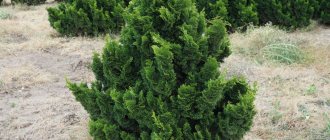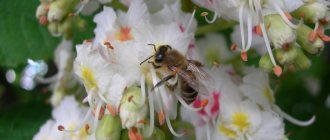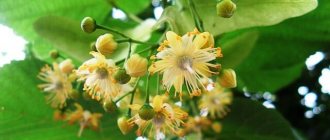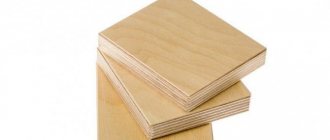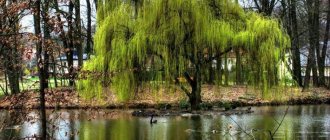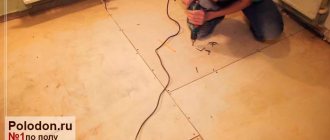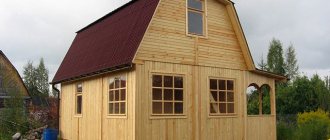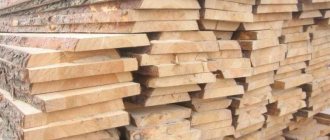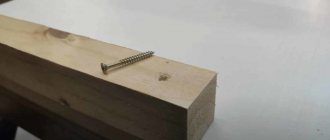Category: Open ground plants
Coniferous plants will truly decorate any garden. But at the same time, after a dozen or two years, they can easily displace their owners from their own plot, since, growing slowly in the first years, they will subsequently begin to grow 1 m per year, growing in all directions. So keep that in mind.
The first question asked by gardeners who are planning to plant a spruce tree on their property is: where will be the best place for it? You can plant spruce trees along the fence as a green fence. It will hide you from the eyes of people who drive or walk along the streets of your garden. Spruce trees should not be planted on the south side, as they will provide a lot of shade, although, in principle, this can also be done if you regularly shorten their tops, not allowing them to reach too great a height. But it is better to plant them outside the site, on the north side, behind a ditch at the very edge of the road that passes by your site. In addition, such a living fence will perfectly protect your garden from the north wind.
If you plant spruce trees as a green fence, then they need to be planted at a distance of 1.5 m from each other.
Spruce has one peculiarity: if it is allowed to grow upward freely, it will begin to shed needles from the lower tiers if it does not have sufficient space for development. If you want your spruce to be lush from top to bottom, then you must cut off the top of the spruce at some point. Let's say you let it grow to a height of 2.5 m. In the spring a young and green shoot will appear, the top begins to grow further, and you simply twist this shoot out; While the needles on it are still very soft, this is very easy to do. For spruce this operation is quite harmless. You break it off no matter how high it grows. As soon as you destroy the apical point of growth, the nearest dormant buds at the base of the broken sprout will immediately begin to grow. One of these shoots will try to replace the top and begin to grow vertically, and you will break it off again. You will stop all attempts by the spruce tree to grow a new top every spring. If you constantly break off the young and green shoot at the top of the spruce tree, then it will become thicker, the branches will become very fluffy and green, the needles will not fall off from the lower branches, and they will not dry out. But you should not trim the ends of the branches, since, as a rule, this leads to drying out of the entire branch.
Spruce trees should not be planted along the border with neighbors. Trees will provide shade to neighbors and interfere with neighboring plants.
In general, it is not recommended to plant spruce on the site, because its root system is superficial and therefore very extensive, and it will spread in breadth and interfere with your garden plants, which will be located even 10-15 m from the spruce.
Spruce has a very interesting feature: it does not like the proximity of other plants and will try to survive them from the adjacent territory. You can, of course, plant a spruce on the site, but then you must definitely limit its root system. You can mark out some area and every year chop off its roots with a shovel, trying to go beyond the designated boundaries. Since spruce has a shallow root system, you don’t have to dig deep, but it’s still tedious work, and you can skip a couple of times, but it will very quickly extend its tentacles-roots to all your plants. It’s easier to do this: if you have an old concrete ring, for some reason not used to create a well, you can bury it to 90-100 cm. If there is no ring, then you can dig a hole, make formwork and pour a concrete square box without bottom. You can also bury the slate, but the spruce roots will gradually destroy it. If you try to bury iron, it will rot in 8-10 years, and the roots will stretch further.
The planting hole should be square, approximately 1 x 1 m. You can add back the soil that you dug, you do not need particularly fertile soil, you need the spruce to grow slowly, in poor soil. And it will grow, don't worry. Spruce is very hardy and also shade-tolerant. Therefore, if you have 4 apple trees, then you can only plant a spruce in the center to a limited extent. With its rather pungent smell, it will successfully protect your apple trees from flying pests of apple trees, since the spruce smell will disorient them: they seem to be flying towards the smell of their nurse - the apple tree, but then some other suspicious smell is mixed in. Fearing to leave their offspring on such an apple tree, pests, as a rule, fly past.
But if you want to plant a blue spruce on your site, then it will need a sunny place. Blue spruce grows much slower than ordinary spruce, but its root system will have to be limited or planted in a place where it will not interfere with the rest of the inhabitants of your garden. By the way, you should not pluck out the top of a blue spruce, since its lower branches do not dry out.
Spruce trees cannot be planted in the fall, as they usually die.
You can propagate spruce from seeds. To do this, you need to collect cones that have not yet opened in the fall. At home, you need to put them on a sheet of paper; they will dry out quite quickly, open up, and seeds will spill out of them. Spruce seeds are small, but with an impeller. You will plant these seeds before winter. You need to find a special place for planting and be sure to check that there are no weeds, and for this you need to prepare the soil specially.
Mix a bucket of peat and half a bucket of sand, add a liter jar of ash. Mix all this, pour the mixture completely into the prepared hole, moisten the seeds, add a layer of regular soil on top, about 1 cm of pine cones - and that’s it. These seeds will undergo natural winter stratification and will sprout in the spring. True, it happens that they don’t sprout in the first year, don’t worry - they will sprout in a year.
First, one small, thin needle emerges; it is very clearly visible, as it is different from anything else. You can’t touch it, wait a year or two: the tree must grow. When the tree has a small stem with three or five needles, you can replant it in the spring. That is, it will be in two years. But you shouldn’t keep it for more than two years; you need to replant it. You can use the bayonet of a shovel to pry the plant and replant it. The main thing is that you carefully plant the stems; you need to plant them at the level of the root collar.
But simple Christmas trees should not be planted using seeds this way. It’s easier to dig up a very small Christmas tree in the forest. You take a lump of earth on the bayonet of a shovel, take out the tree along with the soil, put it on a cloth and transport it.
And also remember this point: when the tree is small, there is no need to orient it according to the sun. If you dig up a large spruce, about 1.5 m or more, then when replanting you need to maintain the orientation towards the sun, because such a fir tree has already adapted to a certain location. In the south, its needle is more resistant to falling off from sunburn, the trunk already has annual rings - narrower in the north, and wider in the south. Do the following: just tie a cloth on the south side, and when you plant it in place, leave the cloth on the south side so that it is oriented to the south.
What determines the growth of blue spruce?
First of all, the growth rate of a tree is influenced by what variety it belongs to: there are fast-growing ones and not. They have different annual growth rates.
If you do not take into account the type of tree, then its growth rate will be affected by growing conditions. The soil should be fertile, slightly acidic, loamy, moderately moist. Changing one of these parameters can lead to a slowdown or even stopping of growth and a deterioration in the condition of the tree.
On a weakened plant, pests easily appear and diseases develop, which also negatively affects the intensity of spruce development. Having chosen the right place for planting, you need to carefully care for the plant. Timely feeding and watering ensure normal tree growth.
Stages of development
The growth rate of spruce varies at different periods of life. For the first 10–15 years it is relatively small, then it increases. Growth does not stop throughout life. An adult tree annually gains 30 cm in height and 15 cm in diameter.
A one-year seedling is no more than 4 cm high. By five years, the height is already half a meter, and the crown diameter is 30 cm. By ten years, it grows to 2.4 m and has a width of 1 meter. At 12 years of age, the height is 3.5–4 m, at 20 - 8 m, at 40 - 15 m, and the diameter is 3 m. At 60 years of age, the spruce rises 17 m and has a crown girth of 4 m.
Rates of growth
Depending on their height, blue fir trees are divided into dwarf, medium-sized and ordinary. This also affects how quickly they grow.
Dwarfs
Dwarf varieties are rarely taller than 3–4 meters. Most of them are bush forms and do not grow more than 50–60 cm. In these varieties, if they are fast growing, the growth is 5–6 cm per year. Otherwise - 2.5 cm.
Medium height
Medium-sized varieties of blue spruce can grow up to 10–20 meters. On average, their annual growth is 10–15 cm. Some varieties can add about 30 cm per year.
Ordinary
A newly planted ordinary spruce adds 3–4 cm in the first year of its life. Over the next 15 years, the annual growth will be 10–20 cm. After that, the rate will increase a little more until the tree reaches its 25–30 meters.
Latest Arrivals
- Comments
- 12/18, Identify bushes
- 15/06, Diamantina
- 17/05, Diamantina
- Rhoda
- 18/12, Rare citrus plants in cultivation
- 31/07, Unabi (jujube, jujube, jojoba)
- 31/07, Senna (cassia)
- Kinds
- 25/01, Tamarisk French
- 25/01, Broadleaf linden
- 25/01, Felt linden
- Varieties
- 15/06, Nevsky
- 15/06, Sorcerer
- 15/06, Kolobok
- Articles
- 17/12, Identify bushes
- 17/05, Blue spruce
- 11/11, Growing luffa, luffa washcloth
How to change the growth rate
The rate of plant development can be influenced, although not significantly. They can be speeded up or slowed down a little if necessary.
Speed up
Acceleration is facilitated by the introduction of nutrients and growth stimulants when growing a tree. Spruce trees need to be regularly fed with foliar fertilizers. It is advisable to use complexes for coniferous plants. Growth stimulants are also very effective. Here you need to give preference to drugs that, in addition to stimulants, contain vitamins, polysaccharides, and polyamides. They not only accelerate the development of the plant, but also provide it with necessary substances.
Industrial use
Siberian spruce, along with common spruce, is a valuable tree species. It is widely used for the production of furniture, musical instruments, construction, and also in the pulp and paper industry. In addition to wood, needles also have a certain value. It is a source of healing essential oils and is used in medicine, in the production of cosmetics, tannins and feed additives for animals.
All types of spruce, including Siberian spruce, are valued in park management. Coniferous plantations perfectly purify the air, making it beneficial for the respiratory system. Walking through the spruce park is recommended for people with respiratory diseases.
Blue spruce varieties
This wonderful tree belongs to the pine family. There are a large number of varieties of spruce, differing in the color of their needles, height and different shapes. However, the blue Christmas tree attracts special attention and arouses the interest of gardeners because of its unusual and bewitching appearance.
It is worth considering the most common types of blue spruce, descriptions of which can be found in specialized literature. They are represented by the following varieties :
- Glauca is a natural variety, not subject to selection. The crown is cone-shaped, the color is represented by various shades of blue. The average annual growth is about 30 cm.
- Glauca globosa is a miniature variety, the crown is spherical, the annual growth is 10 cm. The adult plant is low, about 2 m.
- Iseli Fastigiata - the shape of the crown resembles a narrow cone, the branches have a vertical orientation (akin to poplar), the needles are blue. It grows quite quickly, unlike other species; at the age of ten its height is 10 m.
- Hoopsii is a medium-sized spruce, up to 11 m high, with dense needles of a rich, bright blue color.
- Bialobok is small in size (up to 2 meters), the crown is uneven. A characteristic feature is the golden hue of young shoots. Plant only in a sunny place: in the shade the color disappears.
- Blue Perl is also small in size. At the age of 10 years, its height reaches only 40−60 cm. The crown is round in shape and very dense.
- Alberta Globe - belongs to the varieties of dwarf blue spruce, reaches a height of 1 m, grows up to 2 cm per year. It is characterized by thin short shoots and very beautiful soft and thick needles. Prefers moderate moisture and is frost-resistant.
Description of the plant
Blue spruce is an evergreen coniferous tree up to 30 m high (rarely up to 46 m). The trunk diameter is up to 1.5 m. The bark is thin, scaly. The crown is narrowly conical in young trees, and becomes cylindrical in old trees.
Appearance of the plant
Blue spruces have a limited natural habitat located in North America. Now this type of coniferous trees is widespread far beyond its borders and has gained popularity for its unpretentiousness and durability in harsh natural conditions.
The coniferous plant in question stands out among its green counterparts with its blue or bluish-gray needles. The crown of a tree with proper growth has a conical appearance and is strewn with oblong cones.
The maximum age of spruce in its natural habitat reaches 600-800 years, but trees planted in our latitudes live no more than a century.
Reproduction methods
Spruce trees are propagated by both seedlings and seeds. Experienced gardeners also graft cuttings onto the frost-resistant rootstock of another coniferous tree.
When sowing seeds, it is necessary to take freshly harvested ones, since during the year their ability to germinate is lost. It can be extended up to 15 years when seeds are stored at a temperature range from 0 to +5 ° C in an airtight place. When sowing in spring, the acceptable temperature is 3−5 °C. Before direct sowing into the ground, the seeds are mixed with a moist substrate 1:3 and infused for 1-3 months.
Blue spruce is very popular among gardeners. Planting and caring for it, however, requires certain knowledge, and you also need to make an effort and be patient in this difficult task.
From seeds
The cones are collected in November, after the first frost. Only closed and whole fruits can be collected.
Important! When propagating by seeds, it is worth considering that only 35-40% of the total harvest will retain the characteristics of the variety. The rest may resemble an ordinary green Christmas tree. The collected fruits are left in a warm place until all the scales open.
Then the collected seeds are subjected to stratification. They are treated with a weak solution of potassium permanganate to kill germs. Then it is placed in a bag and lowered into a glass jar. The entire structure is left in the refrigerator until spring.
To awaken the planting material after stratification, it is filled with a root-forming and antifungal solution. 10-12 hours in a humid environment is enough. After such preparation, the seeds can be planted in:
- open ground
- individual containers
- roll-your-own cigarettes
Planting fir trees
Many people wonder whether it is possible to plant coniferous trees on their site, as well as how to grow spruce. The blue herringbone planting method does not differ from other decorative forms of seedlings. the main condition is to preserve the root system from drying out, since exposed roots die within 15-20 minutes. They should also be protected from exposure to wind and sun. The roots of the seedling must be wrapped or placed in a container.
They also prefer light, loose soils and loams; stagnant water is contraindicated for them. In this regard, the soil must be well drained.
Landing Features:
- large spruce trees must be planted in winter;
- the pit should be 50 to 70 cm deep;
- between tall trees the distance should be at least 2-3 meters;
- the soil around the trunk should be quite loose, and it should contain turfy deciduous soil, as well as sand and peat;
- the drainage system should be about 20 cm thick, it is possible to use fine crushed stone and sand;
- the application of nitrogen-phosphorus-potassium fertilizers after planting has a beneficial effect on the development of the plant. Also, when planting in a hole, it is recommended to add a layer of soil along with spruce needles from the place where the spruce grew.
When planting young seedlings of this beautiful tree, it is also necessary to comply with some mandatory conditions:
- You need to choose a well-lit place for planting. Although spruce is a shade-tolerant tree, blue spruce requires sunlight, because in the shade their color becomes less bright and their crown becomes loose.
- Suitable for planting are specimens that have been growing in a container for at least the last six months, and their root system is strong and ready for transplanting.
- It is preferable to choose a seedling at the age of 3-5 years, since the tree is already quite strong, adapts more easily to environmental conditions and is ready to decorate the area.
- There should be no weeds at the planting site, and the planting hole should be dug a little larger than the volume of the tree’s root system. This is due to the fact that it will be easier for young roots to make their way into soft soil.
- After removing the seedling from the container, you need to pour some soil from it onto the bottom of the hole.
- It is necessary to place the seedling in the hole so that the ground levels coincide. If the tree is buried too deep or, conversely, planted above the level, the root system suffers and the tree may die.
- The area around the seedling is sprinkled with earth and thoroughly compacted to prevent air from reaching the roots.
- Immediately after planting, the spruce must be well watered, then it will be easier for the roots to penetrate the soil.
If the tree is not transplanted from a container, then it is better to carry out this process in early spring, before the plant begins to actively grow. After frost and thawing of the ground, the seedling is dug up along with a lump of soil and replanted. As already mentioned, it is important not to dry out the roots, so spruce seedlings are always sold with their roots covered. They are wrapped with soil or planted in a container.
Diseases and pests
The diseases mainly affect young, weakened spruce trees. The risk group includes all plants during the first 2 years after transplantation, as well as those that grow too close to each other, with insufficient lighting or excess moisture.
Most often, blue spruce trees suffer from fungal diseases such as:
- rust of needles or cones, in which pads with red powder (fungal spores) are formed. They completely recolor the needles in the spring or form on the inside of the blades of cones that hang open on the tree for a long time;
Rust
- schnotte. With this disease, the needles become black or brown, and in the spring those needles that were damaged last year turn white;
- tracheomycosis wilt of spruce. Occurs as a result of rotting of the roots, while the needles turn red, turn brown and crumble, and the tree dies. Most often it develops during prolonged stagnation of moisture in the soil, especially at low temperatures;
- necrosis of the cortex. With this lesion, the bark darkens, dries, peels off, and growths or pads with fungal spores form on it;
- ulcerative cancer. Open ulcers form on the trunk, from which resin oozes, or closed ones form resin swellings.
Treatment for diseases: all damaged parts are removed from infected trees, the places of cuts and cuts are treated with garden varnish and watered at the root with a solution of fungicidal preparations.
Insects gnawing on needles and pests of bark and wood are combated with the help of the preparations “Karbofos”, “Rogor” and “Detis”.
Required tree care
Young seedlings are very fastidious and can quickly die if not properly cared for. Mature trees do not need care.
If the summer is hot and dry, young plants need to be watered at least once a week at the rate of 12 liters of water per spruce . The prickly beauty will also benefit from loosening the soil to a depth of 7 cm and sprinkling the tree trunk circle with a layer of peat about 6 cm thick. In the spring, peat is mixed with the soil during loosening. Fertilizing with mineral fertilizers is also useful for young spruce trees .
Heavy snow can break fragile young branches. Before the onset of cold weather, they are pulled to the trunk and tied with a rope or net. It is necessary to cover the tree with spruce branches from late interseasonal frosts, since the needles of young seedlings do not tolerate low temperatures.
How many years will it take to grow a spruce tree in the country?
- How many years will it take to grow a spruce tree in the country?
- How to propagate spruce
- How to replant a pine or spruce tree
- How to grow a Christmas tree at home
Most owners of their own plots would be happy to plant a spruce on it. This tree is not only evergreen, but is also considered very characteristic of the Russian landscape and is simply ideal for decorating a piece of land in a landscape style. But not every site has an area that allows this to be done.
Where does blue spruce grow in Russia?
In Russia, blue spruce grows throughout the central zone, in the taiga regions, Altai and the Urals . It is grown both in nurseries and privately, from seeds. But the best way to propagate this coniferous tree is grafting. It is difficult for species varieties to propagate outside a nursery; it is difficult for novice breeders to grow them.
What kind of tree to plant at the dacha
Spruce belongs to the pine family - a large tree, a narrow, cone-shaped crown, a straight trunk. Breeders have developed many varieties with different needle colors, different shapes and heights, so when creating a landscape composition you can choose from a large number of options. How many centimeters a tree will grow per year depends on both the local conditions and the chosen variety.
When developing a composition, it is necessary to take into account that the planted tree will not remain as small and beautiful for long. In a few years it will take up much more space than at first.
If you want to improve the area with an evergreen tree, you should not plant one dug up in the nearest forest. Firstly, it is illegal, and secondly, replanting a wild tree will lead to the fact that in a few years on your site there will not be a beautiful shaggy Christmas tree growing, but an uncomfortable, spreading monster, the lower part of the trunk will be bare.
An excellent alternative is to choose something from the refined varieties that breeders have worked on. It could be a Canadian spruce, a prickly spruce, or a blue or Serbian spruce. These varieties are well suited to life in midland climates and are quite good looking.
